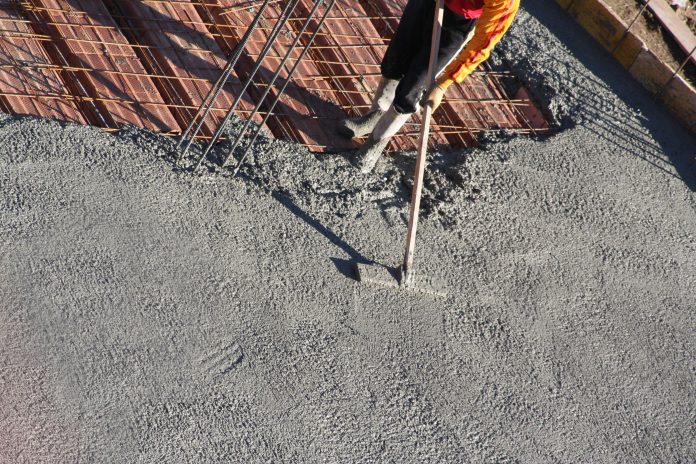Thomas Guillot, CEO, Global Cement and Concrete Association, explains why it is crucial for the government to increase support for the cement and concrete industries to achieve a net zero future
The global construction industry is about to enter a defining period. In the coming decades, it must balance sustainability commitments while meeting huge increases in demand to meet the infrastructure requirements of a rapidly growing population. With 75% of the infrastructure that will exist in 2050 yet to be built, balancing these challenges will take more than just collaboration between producers, designers, and constructors. It will also require policymakers and governments to provide strong support and heavy investment.
Policy work is beginning within countries, at country level, and at an international level. For example, the UN Industrial Development Organization’s Industrial Deep Decarbonisation Initiative (an initiative of the Clean Energy Ministerial) is a global coalition of public and private organisations who are working to stimulate demand for low carbon industrial materials. Co-led by the UK and India, it aims to support essential to abate sectors such as the cement industry in their decarbonisation journey through policies such as the green procurement of construction materials.
The cement and concrete industry is a vital area of construction that will need to work closely with governments around the world over the coming years. Decarbonising the industry will have a significant positive impact on the fight against climate change, with concrete being the most used human-made material on the planet. Fourteen billion cubic meters of concrete are produced every year for use in all types of construction, with cement – the key ingredient in concrete – responsible for around 7% of global CO2 emissions. And with public infrastructure accounting for almost 60% of all demand for cement and concrete globally, public policy will play a crucial role in the direction of the industry and will be vital in getting the wider value chain to decarbonise.
Government support
While the industry can focus on developing more sustainable cement and concrete solutions, we need policymakers and governments around the world to support decarbonisation through public policy. A comprehensive policy framework that makes low-carbon cement manufacturing an investable proposition would be a positive first step by governments. This would include green public procurement policies that will stimulate demand for low-carbon concrete products and policies to underpin the creation of the infrastructure and investments needed for a circular and net zero manufacturing.
By generating market demand for low carbon products in construction and public procurement, policymakers can ensure sustainable practices and materials become the norm and keep net zero targets on track.
Governments should also be ambitious in setting new construction standards for areas such as the energy performance of buildings, and in improving access to waste and by-products. This would further help the industry reach its circular potential and make sure that we don’t steer off-course from net zero in the coming decades.
We also need policymakers to champion new innovations such as carbon capture utilisation and storage (CCUS) innovations. This technology, which is already proving effective in projects around the world, needs to mature by the end of the decade, and our industry is committed to ten industrial scale carbon capture plants by 2030. While the technology is advancing, the economics remain challenging so it is critical that the industry has government support to expand the successful pilots across the world to a commercial scale of deployment.
The GCCA Roadmap
Increased policymaker and government support would help continue the vital and ground-breaking work already being done by the industry to become more sustainable. Last year, on behalf of the cement and concrete industry, the Global Cement and Concrete Association (GCCA) launched its Concrete Future 2050 Roadmap for Net Zero Concrete, the first such document for any of the global ‘essential to abate’ industries. Similarly, we were the first such global industry to join the UN’s global Race to Zero initiative as an accelerator.
The GCCA Roadmap is a direct route to decarbonisation of the industry by 2050, with a shorter-term goal of cutting emissions by a quarter by 2030. It’s built around a seven-point plan, which includes boosting the offering of low carbon cement and concrete products, increasing circularity in our process and products – in particular reducing fossil fuel use in manufacturing – and accelerating innovation and breakthrough technologies such as carbon capture, which we’re already progressing.
Alongside the Roadmap, we’ve also been expanding our innovation capabilities through our Innovandi programmes. The Innovandi Global Cement and Concrete Research Network (GCCRN) brings together academia and industry to collaborate on pre-competitive research to develop new methods and technologies for reducing the carbon footprint of cement and concrete. Last year, we launched the Innovandi Open Challenge – a unique industry accelerator that matches exciting start-ups from around the world with our member companies to accelerate and develop new technologies to help our sector decarbonise.
The Roadmap and Innovandi networks are strong foundations for the GCCA to build on as we move towards a net zero future by 2050 but won’t be enough on their own. Collaboration between all stakeholders, from designers to policymakers and governments, will be crucial to meeting net zero targets and maintaining the strong progress already made. By working together, demand for public infrastructure to be made more sustainable and support for the innovations and technology the industry is developing can be increased. We can create a net zero future for cement and concrete, but only if we do it together.














